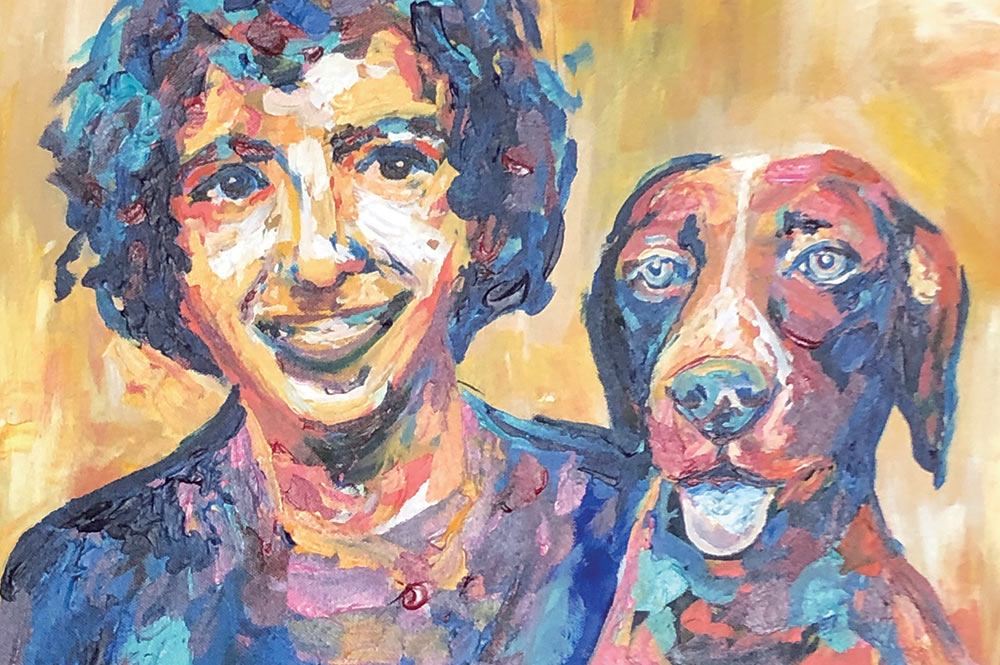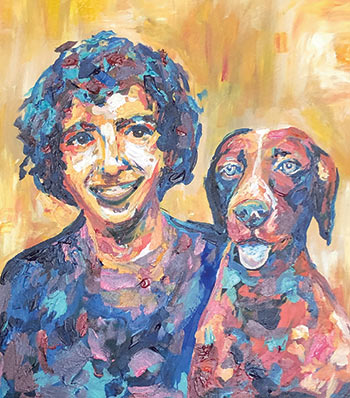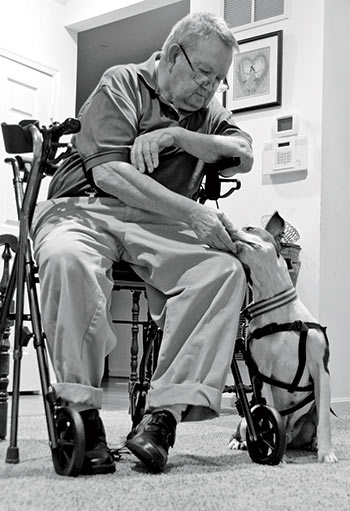
When it comes to thinking about dogs and family, for me, they are one and the same. As far back as my earliest memory, my family always had a canine companion within our home. My last BFF — best furry friend — was Madison, a German shorthaired pointer that we adopted in 2007, my junior year at Wando High School.
 Madison and I were inseparable throughout my final years in the public school system and then my college years. Upon college graduation, I was hired by the school — but soon started itching to add new experiences to my resume, including an opportunity on the West coast. Yes, this would mean committing to the gut-wrenching decision to leave Madison. I knew she would be in good hands with my parents, so off I went to explore California.
Madison and I were inseparable throughout my final years in the public school system and then my college years. Upon college graduation, I was hired by the school — but soon started itching to add new experiences to my resume, including an opportunity on the West coast. Yes, this would mean committing to the gut-wrenching decision to leave Madison. I knew she would be in good hands with my parents, so off I went to explore California.
Six days after moving into an apartment in San Mateo, California, I suffered a traumatic brain injury, or TBI, as a result of a bicycle accident. Thankfully, I was wearing a helmet. After the accident, I spent months in Stanford Hospital’s ICU, an acute care facility in Marin County, California, as well as Shepherd Center’s in-patient rehab in Atlanta. I’ve also endured years of outpatient therapy of all types since returning to the Lowcountry.
 Long story short, I returned to Mount Pleasant after my seven months of in-patient experience. The simple, everyday tasks of walking and talking were still a ways off, but knowing I’d be gaining full recovery at my childhood home — with Madison’s presence — helped me to stay positive. For the next seven years, Madison was my cheerleader, motivator and listener as I navigated life to find my new normal. But these furry companions of ours, unfortunately, don’t live forever, and in December 2019, we had to say goodbye to Madison. She lived to be almost 17 — well past her breed’s life expectancy — and I know she gave me her absolute best.
Long story short, I returned to Mount Pleasant after my seven months of in-patient experience. The simple, everyday tasks of walking and talking were still a ways off, but knowing I’d be gaining full recovery at my childhood home — with Madison’s presence — helped me to stay positive. For the next seven years, Madison was my cheerleader, motivator and listener as I navigated life to find my new normal. But these furry companions of ours, unfortunately, don’t live forever, and in December 2019, we had to say goodbye to Madison. She lived to be almost 17 — well past her breed’s life expectancy — and I know she gave me her absolute best.
A few months before her passing, I began researching options for a new service dog to assist me with critical activities that became more of a challenge after my TBI. I learned about Palmetto Animal Assisted Life Services (PAALS) through Marka Danielle, a friend and survivor of a spinal cord injury. She’d been matched with her very own assisting canine named Cora.
While the application process for these animals is extensive, it is necessary to ensure that these gifted and welltrained dogs are appropriately matched with each applicant’s needs. Unlike an emotional support dog or a therapy dog, a service dog is trained to perform as a helper, responding to cues that will assist and improve the handler’s quality of life. This could be anything from assisting after a fall to retrieving a phone for emergency calls and other tasks.
I hold onto hope that I will soon be paired with my own service dog to help me continue the path to recovery. I look forward to introducing you all to Mount Pleasant’s newest assistive canine sometime in the near future.
DEFINITIONS:
ASSISTANCE/SERVICE DOG: A dog trained to aid or assist an individual with a disability. They are trained by an assistance dog organization or by their handler, often with the help of a professional trainer.
EMOTIONAL SUPPORT DOG: A dog that provides comfort to help relieve the symptoms of a person’s disability. According to the Americans with Disabilities Act, these dogs are not service animals. State and local regulations dictate the rules and acceptance of emotional support pets in public spaces.
THERAPY DOG: A dog that is trained in providing affection, comfort and support to people, often within hospitals, retirement homes, nursing homes, schools, libraries, hospices or disaster areas.
For those wanting to learn more about the varied categories of service animals and the laws pertaining to their acceptance, visit ADA.gov and AssistanceDogsInternational.org.
By Anthony Macchio
